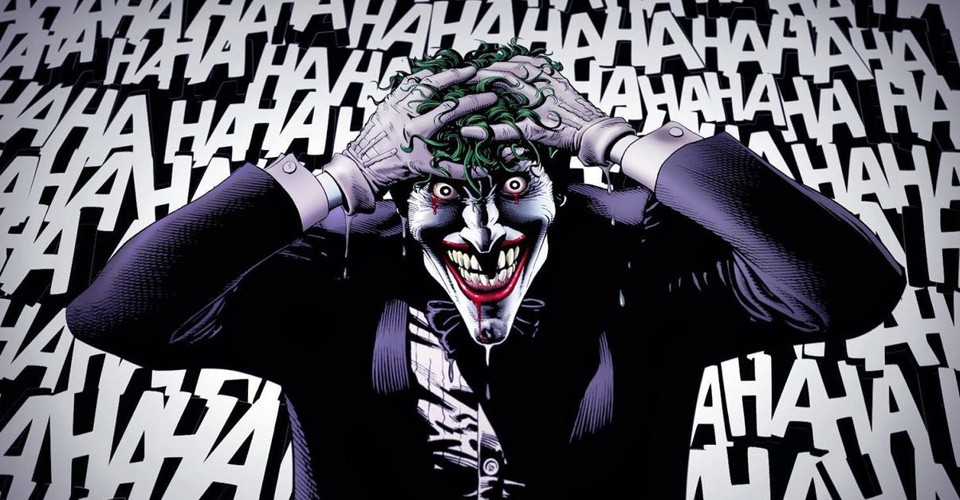Read: Untangling the controversy over the new ‘Joker’ movie
The most lasting comic-book attempt at crafting a Joker origin came from one of the most acclaimed names in the medium, Alan Moore, who wrote the 1988 graphic novel Batman: The Killing Joke (which was penciled by Brian Bolland). That story drafted off one of the only previous attempts to provide some reason for the Joker’s existence, 1951’s Detective Comics No. 168, which posited that the Joker had once been a criminal named the Red Hood, who went mad after diving into a vat of chemicals to escape Batman. But while that vintage issue had provided an explanation for the Joker’s appearance, it made little effort to understand his core madness, leaning instead on the notion that he was a career criminal who had just undergone a rapid change in image.
In The Killing Joke, Moore took that earlier tale and tried to deepen it. The 45-page “one-shot” story reveals the Joker’s past: He was a struggling stand-up comedian who had lost his wife and unborn child in an accident, embarked on the robbery of a chemical plant to make ends meet, and fell into a vat while fleeing Batman. The narrative removes the Joker’s background as a master criminal and emphasizes that he was a relatively ordinary man who had “one bad day” that drove him to lunacy. In the present, the Joker kidnaps and brutalizes Barbara Gordon (the daughter of Commissioner Jim Gordon and the current Batgirl), paralyzing her and torturing her, then taking lewd pictures of her to torment her father with.
It was a shocking story within the parameters of DC Comics, all the more so because it was presented as canon, not as an adult-oriented tale existing outside the monthly Batman story lines. Barbara Gordon remained paralyzed for decades, all because of a stunt by the Joker intended to demonstrate that what had happened to him could happen to anyone. “You had a bad day, and everything changed. Why else would you dress up like a living rat?” the Joker says to Batman. “When I saw what a black, awful joke the world was, I went crazy as a coot! I admit it!”
The story ends with Batman bringing in the Joker “by the book,” as Commissioner Gordon insists, to “show him that our way works”; the Joker’s efforts to drive Gordon mad fail. Batman, also transformed into a costumed creature by trauma (the death of his parents), reminds the Joker that he himself never succumbed to evil. But despite that bittersweet ending, The Killing Joke helped cement the villain’s reputation for nihilism, forging a modern template for a man once portrayed as a vicious trickster.
Both Bolland and Moore have gone on to express their dissatisfaction with The Killing Joke, with Moore remarking that DC should have reined him in on the decision to paralyze Barbara. “I think it put far too much melodramatic weight upon a character that was never designed to carry it,” he said in an interview:
It was meant to be something that would liberate comics. Instead, it became this massive stumbling block that comics can’t even really seem to get around to this day. They’ve lost a lot of their original innocence, and they can’t get that back. And they’re stuck, it seems, in this kind of depressive ghetto of grimness and psychosis. I’m not too proud of being the author of that regrettable trend.
The comic-book writer Gail Simone cited the treatment of Barbara’s character in her famous list of Women in Refrigerators, a website that collected examples of female comic-book characters who were callously killed or mutilated, usually to advance the story of a male hero. Despite the critiques, The Killing Joke endures as a milestone in the industry, an exercise in brutality that stood out in a more family-friendly comic-book world. It has been cited by various directors of Batman films, including Tim Burton (who called it his favorite comic), Christopher Nolan (though he said he sought to adhere more to the original 1940s presentation of the character), and now Todd Phillips, whose film specifically draws from Moore’s concept that the Joker was once a second-rate stand-up comedian before he had a mental breakdown.

Leave a Reply